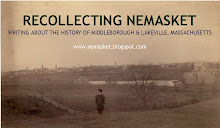The reading in all our schools … is still defective. As a general rule, with the older scholars, it is too rapid. It would seem that the only end to be attained is the end of the paragraph to be read, and that readers, like race-horses and steamboats, are to be prized according to their speed. As a necessary consequence, there is imperfect enunciation, the dropping and clipping of final syllables, the ignoring of accent and sometimes several words are blended into one. For instance, we have heard and pronounced an, and the sentence, “Who is he,” Whizzie!
The committee challenged teachers to establish a high standard in this area.
Some of our teachers are not so good instructors in reading especially, as we wish they were. Some follow simply the old way, allowing about so much time, and so many paragraphs to each, and only aiding in pronunciation, and not closely and accurately in that; whereas, if need be, every paragraph should be repeated, and elaborated, till it be read with as much correctness as is aimed at in the solution of a problem, or the analysis of language. A lazy reading-exercise is of all things, inexcusable and reprehensible.
Despite the School Committees challenge, reading remained a matter of concern, and in 1879 the committee continued to regard the subject as the most neglected and poorly taught. To remedy the situation, the committee suggested the abandonment of the traditional “A B C method” in favor of phonics and word methods. Single words were taught, “one after another, by script from the blackboard, until from one hundred and fifty to two hundred had been learned as wholes, had been analyzed by sounds and spelt be letters.”
Swinton’s Primer and Readers were employed at the Green during this period, the better known McGuffey Readers being in use at Middleborough center. Such readers were important in not only advancing the abilities of the students, but in introducing them to a much wider world beyond Middleborough.
 In contrast to today, scholars in the late 19th century were taught first to read script, rather than printed words. “After they can read readily at sight simple sentences in script, that is, after the first three or four months, the transition to the printed word and sentence is made, and, if the teaching has been as it should be, no difficulty is experienced in the transition, but after a few days they read as readily in the one form as in the other. The change from script to print has been found much easier than from print to script.”
In contrast to today, scholars in the late 19th century were taught first to read script, rather than printed words. “After they can read readily at sight simple sentences in script, that is, after the first three or four months, the transition to the printed word and sentence is made, and, if the teaching has been as it should be, no difficulty is experienced in the transition, but after a few days they read as readily in the one form as in the other. The change from script to print has been found much easier than from print to script.”In the fall of 1890, the Middleborough schools switched to the “sentence method” of teaching reading in hopes of improving standards of reading.
This differs from our previous method essentially in this, - that instead of teaching a single word by itself, that word has been incorporated into a sentence, and the teacher, by skillful questioning, gets the sentence which she wishes from the child, first in an oral expression, then writes it upon the board, and then the written expression is read by the child. To get these oral expressions the teacher brings before the children toys of all sorts, puts them into their hands, talks with them about the objects, and takes such expressions from them as : I have a cow, I see a cow, The cow has two horns, The cow gives milk, It is my cow, etc. From these expressions the word cow is forever fixed in the memory, good expression is being taught in the reading, and intuitively the child is learning “I have,” “I see,” “It is,” and the like, without having his attention called to them especially.
Despite the change, drills in phonics were retained as it was felt that such skills were helpful in aiding students in learning new words when there was no teacher present.
The school committee continued to focus upon improving reading skills among Middleborough pupils , and in 1895 reported what it considered “good progress.” “The pupils now read forty per cent. better than they did two years ago.”
In the late 1930s, after a period of having seen little focus, reading received renewed attention, particularly at the Green which by that time was operating with the first and second grades for East Middleborough only. “Longer time allotments, frequent standardized tests, and modern remedial techniques, have been employed to improve the reading facility and comprehension.” Phonics also saw increasing use in the classroom during this time.













+-+Copy.jpg)

+of+Smoky+Mountains+018.jpg)
No comments:
Post a Comment